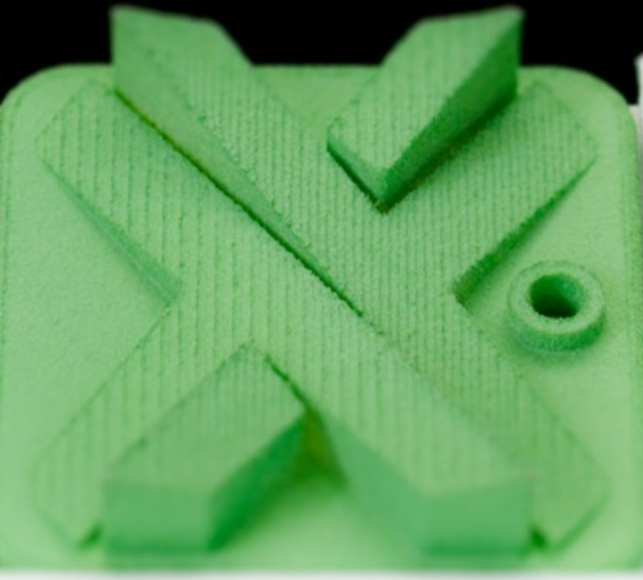When designing products or their elements one of the essential features can be colour. Among other advantages, 3D printing can be effective when you need to manufacture parts of different colours. This article will overview two possible options to get your 3D printed parts in colour: direct colour 3D printing and post-processing that will make your parts coloured.
Two 3D printing colouring methods
There are two most popular ways to get colourful 3D prints:
- Get parts directly printed in colour: using the print material (powder or filament) of the desired colour
- Get parts post-processed: for example, you can use standard colour material (Grey/White) and dye it with the desired colour
Types of colour 3D printing
Direct 3D printing
Direct colour 3D printing uses a colourful filament to 3D print your models. For example, FDM is the most popular 3D printing technology that can use colourful filaments. Bright colours and nice details can be achieved depending on the quality of filament. The main drawback with direct colour 3D printing is, it won’t allow you to mix the colours, so you can’t choose any RAL colour with the standard solutions.
Indirect 3D printing
Indirect colour 3D printing applies the colour from an external source during the printing process (e.g in Multi Jet Fusion 3D printing). This technology is much more precise and allows for a more realistic appearance of the 3D prints. It is important for you to remember that indirect colour 3D printing uses CMYK color mode and you need to take that into consideration when preparing your model.
Colour 3D printing options available at FacFox
Multi Jet Fusion (MJF) and fused deposition modeling (FDM) are the two popular colour 3D printing technologies.
Colour fused deposition modelling (FDM)
FDM is one of the most commonly used 3D printing technologies on the market FDM parts are available in a wide range of colours (Black, Blue, Grey, Ivory, Red) in the most common materials like ABS and ASA.

When 3D printing multi-coloured parts using FDM you must use the same material throughout the entire part. For example, you cannot go from printing in white ASA to black ABS. Generally, common materials like ASA, PLA and ABS come in a wide selection of colours. In order to get a multi-coloured part, split the CAD model into parts of different colours and assemble them later. Advantages
- Achieves bright colours and nice details
- Good mechanical properties
Disadvantages
- Monotonous colours (e.g Lego blocks) and not as precise as MJF colour printing
- Mixing of colours is not possible.
Colour Multi Jet Fusion (MJF)
Multi-Jet Fusion is the only technology which can print engineering-grade plastics (Polyamide (Nylon 12)) in full-colour. With this technology you can produce full-colour functional parts while maintaining optimal mechanical properties. Since it is indirect 3D printing, it is capable of creating full-spectrum colour parts with a voxel-control system and is much accurate with colour reproduction.

Advantages
- Mechanically strong – can be used for end-use parts
- Cost-efficient, especially with small and mid-sized series
- High productivity – can be used for batch production
- This technology is much more precise and allows for a more realistic appearance of the 3D prints
Disadvantages
- Transparencies not possible
- Not suitable for very small, delicate parts
Post-processing options for colouring
If a filament or powder of the desired colour is not available or the technology you want to use doesn’t offer a colour print material, colouring at post-processing is an option.
Spray painting
As the name indicates, spray painting is the coating of paint on the 3D part using spray paint cans and a very common colouring technique that is used even for conventionally machined parts. One major drawback is, the paint coating is just on the surface level; it doesn’t go deeper into the part and hence, if it is scratched or subjected to wear and tear, the internal natural colour is visible. Technologies compatible: MJF, SLS, SLA, FDM
Dyeing

Unlike spray painting, which coats the paint only on the surface of the part, dyeing colours the plastic deeply. This assures vibrant colours in particular and also makes it possible to avoid the phenomenon of peeling or scratching which can occur with spray painting. The lack of excess thickness prevents loss of detail, thus conforming most closely to the original design. This quality is critical and most important when 3D printing technology has been selected because of the design complexity. Many users prefer dyeing a part in black due to its uniformity in colour and the overall look of it. Technologies compatible: MJF, SLS
How to prepare your design for colour 3D printing?
Not all file formats, like .stl, .catpart, contain information on the desired colours. If you want to print your model with colour, especially with MJF, we advise you to create and upload an additional .obj file with colour texture specifications, while calculating the costs. Whereas with FDM, any file format works as the filament itself is coloured.
Conclusion
As you can see, there are 2 approaches to get colourful 3D prints: produce them with the technologies that allow to add colour during the 3D printing process (FDM, MJF) or post-process them with dyeing or spray painting. Both options are cost-effective and usually don’t substantially increase the cost of the 3D prints (on average by 10-15%). Check out the available colour options, prices, and lead times by uploading your CAD files to the FacFox Instant Quoting Engine.
